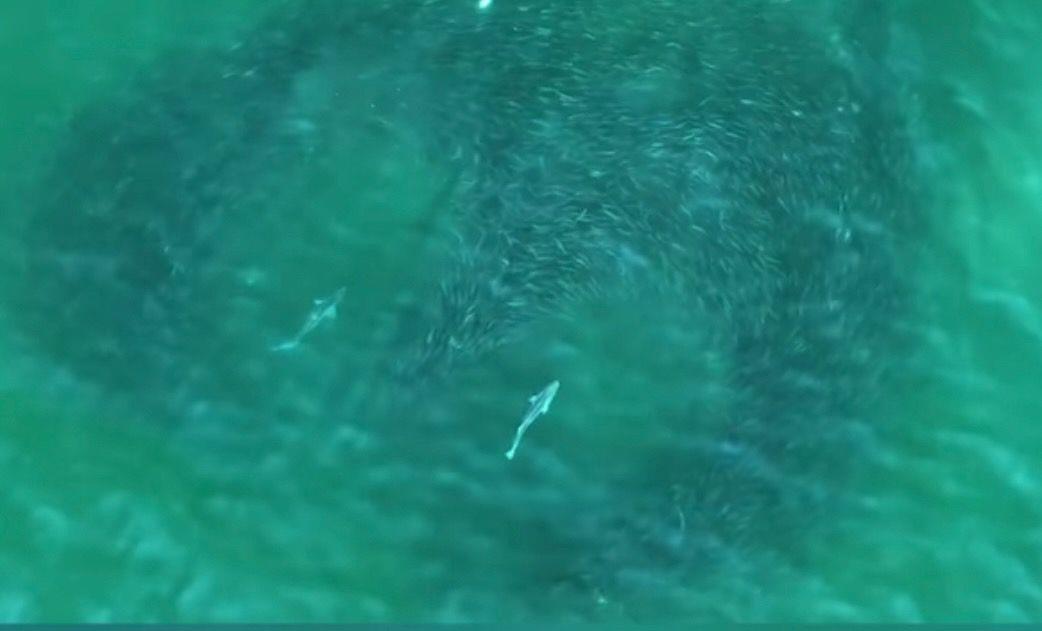Suffolk has bolstered its shark monitoring efforts following a series of bites that left beachgoers thinking twice before dipping their toes. In response to five incidents off Long Island Beaches last week, the county has increased patrols and deployed additional drones to monitor the waters for potential threats.
County Executive Steve Bellone announced that lifeguards at Smith Point Park and Cupsogue Beach will use the drones as part of an enhanced surveillance program to ensure the safety of the swimming public. He said the county will spend $130,000 on two new drones and a pair of jet skis to aid ocean lifeguards, who will receive training to become certified drone operators. They’ll also be used to monitor rip currents and sea conditions. The effort comes as the attacks are on pace to outnumber the eight incidents reported last year, none of which were fatal.
In a July 4 encounter, a 47-year-old man had his right knee bitten near Quogue Village Beach, and on the same day, a 49-year-old man reported that a shark nipped him at Fire Island Pines. A 15-year-old boy was bitten on his foot while surfing Monday at Fire Island’s Kismet Beach and later that day, a teenage girl reported being attacked by a shark off Robert Moses State Park. A few days later, a 10-foot shark was spotted at Robert Moses prompting officials to temporarily ban swimming. State park officials said an unknown person was also attacked by a shark around the same time.
Shawn Donnely, a surfer who was bitten last year by what he thought was a sand Tiger shark, told the South Shore Press that the creature knocked him off his board and then returned to bite his leg. He said the water was choppy and unsettled at the time and the shark was probably just curious to see if he was an easy meal.
The toothed critters are suspected of visiting Long Island waters more frequently due to increased food supplies, particularly large schools of menhaden, which have seen a resurgence after fishing regulations were stiffened to protect them. Ocearch, a global non-profit organization that monitors shark movements for research purposes, shows the travels of huge great white sharks up and down the Long Island coast, though none of the beasts they have affixed homing devices to have shown up recently.
 |
|
Drone Footage Recorded On July 1 Off Southampton Shows
Sharks Hunting Large Schools Of Menhaden. Joanna L Steidle
|
“We are now more vigilant than ever,” said George Gorman, the state’s park director for Long Island. “We have drones in the sky; we have lifeguards on WaveRunners that watch over the waters."
In the wake of the attacks, Gov. Kathy Hochul committed $1 million in state funds for 42 new drones for Long Island and New York City, with half of the eyes in the sky slated for local beaches.
Last year, the Florida Museum of Natural History documented 57 confirmed, unprovoked shark attacks worldwide, with 41 in the United States, the eight in New York included. Sharks don’t generally eat humans, the scenes from the movie Jaws notwithstanding, and normally prefer their natural prey of seals and fish. To the north, Cape Cod has quickly become one of the largest great white shark hotspots in the world and the first ever in the North Atlantic with beachgoers recently watching in horror as the predators ripped apart seals. The cape has joined South Africa, central California, Mexico’s Guadalupe Island and Australia’s Neptune Islands as global playgrounds for the great whites. The sharks are most concentrated in Massachusetts during June through October, the prime summer season for more than three million vacationers flocking to the shore.
The Suffolk County Police Department has encouraged the public to continue enjoying the beach, but encouraged swimmers to exercise caution. They recommend keeping an eye out for pods of fish, which may attract the predators, and birds flying above looking for opportunities to grab pieces of the carnage. Gavin Naylor, the director of the Florida Program for Shark Research, advised people to swim in groups, stay close to the shore, and avoid areas where the bait fish are present.
Although the risk of shark attacks remains relatively low, authorities stress the importance of technology, increased patrols, and public awareness in keeping the beaches safe.
“Our lifeguards keep a watchful eye on the waters to help keep people safe and the drones and watercraft will be very helpful,” said Suffolk Legislator Jim Mazzarella, whose district includes Smith Point. “Though we’ve seen an uptick in incidents, attacks are relatively rare and people shouldn’t stop going to the beach. They just need to be more aware when going in the water.”
